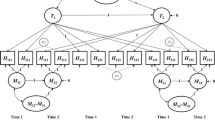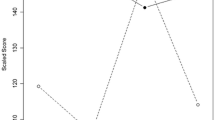Abstract
Enhancing quality of instruction can be defined as the main purpose of instructional evaluation procedures in universities. Many universities collect and analyze feedback information from student ratings for the purpose of instructional improvement. Nevertheless, concrete research evidence is still needed to explore whether this purpose has been actually achieved. This study investigated the perceived role that student ratings actually played in making improvements in instructional practices within the context of a public research university. The population comprised 1,139 professors, associate professors, senior lecturers, and lecturers. The responses were subjected to descriptive statistics, principal component analysis, one-way ANOVA, and independent t test. The findings uncovered faculty responsiveness to student ratings and identified specific practices that they modified in response to results from student ratings. The findings also took cognizance of the respondents' recommendations in order to boost the quality of instruction such as augmenting feedback from student ratings by instructional consultation and providing written explanations to assist higher education faculty in interpreting the results.
Similar content being viewed by others
References
Abrami, P. C. (2001). Influencing judgments about teaching effectiveness using teacher rating forms. New Directions for Institutional Research, 109, 59–87.
Crosson, A. C., Boston, M., Levison, A., Matsumura, L. C., Matsumura, L. C., & Resnick, L. B. (2006). Beyond summative evaluation: the instructional quality assessment as a professional development tool (CSE Technical Report 691). Los Angeles: National Center for Research on Evaluation, Standards, and Student Testing.
Faul, F., Erdfelder, E., Buchner, A., & Lang, A. G. (2007). Statistical power analyses using G*Power 3.1: tests for correlation and regression analyses. Behavior Research Methods, 41(4), 1149–1160.
Franklin, J., & Theall, M. (2002). Faculty thinking about the design and evaluation of instruction. In N. Hativa & P. Goodyear (Eds.), Teacher thinking, beliefs and knowledge in higher education. Dordrecht: Kluwer.
Gall, A. R. (2004). Faculty perceptions of the effects of student evaluations of teaching on higher education instructional practices and instructor morale. Doctoral dissertation, Marshall University, Huntington, USA.
Gravestock, P., & Gregor-Greenleaf, E. (2008). Student course evaluations: research, models and trends. Toronto: Higher Education Quality Council of Ontario.
Johnston, S. (2002). Student Evaluation and Teaching (SETL) Policy and Guidelines. Retrieved 15 January 2012 from http://acserv.admin.utas.edu.au/acservices/meetings/talc/Appendix/2_02C2.doc
Lewis, K. G. (2001). Using midsemester student feedback and responding to it. New Directions for Teaching and Learning, 87, 33–44. doi:10.1002/tl.26.
Marsh, H. W., & Roche, L. A. (1997). Making students' evaluations of teaching effectiveness effective: the critical issues of validity, bias, and utility. American Psychologist, 52(11), 1187–1197.
Marsh, H. W., & Roche, L. A. (1993). The use of students' evaluations and an individually structured intervention to enhance university teaching effectiveness. American Educational Research Journal, 30(1), 217–251.
Murray, H. G. (2005). Student evaluation of teaching: Has it made a difference? Paper presented at the Annual Meeting of the Society for Teaching and Learning in Higher Education, Charlottetown. Prince Edward Island
Murray, H. G. (1997). Does evaluation of teaching lead to improvement of teaching? International Journal of Academic Development, 2(1), 8–2.
Ory, J.C. (2001). Faculty thoughts and concerns about student ratings. In Techniques and strategies for interpreting student evaluations (pp. 3–15). San Francisco: Jossey-Bass.
Spencer, P. A., & Flyr, M. L. (1992). The formal evaluation as an impetus to classroom change: myth or reality? (report no. JC 920 441). Riverside: Riverside Community College.
Stratton, R. W., & Myers, S. C. (1994). Faculty behavior, grades, and student evaluations. Journal of Economic Education, 25(1), 5–16.
Wachtel, H. K. (1998). Student evaluation of college teaching effectiveness: a brief review. Assessment & Evaluation in Higher Education, 29(2), 191–121.
Author information
Authors and Affiliations
Corresponding author
Rights and permissions
About this article
Cite this article
Safavi, S.A., Bakar, K.A., Tarmizi, R.A. et al. Faculty perception of improvements to instructional practices in response to student ratings. Educ Asse Eval Acc 25, 143–153 (2013). https://doi.org/10.1007/s11092-013-9160-3
Received:
Accepted:
Published:
Issue Date:
DOI: https://doi.org/10.1007/s11092-013-9160-3




